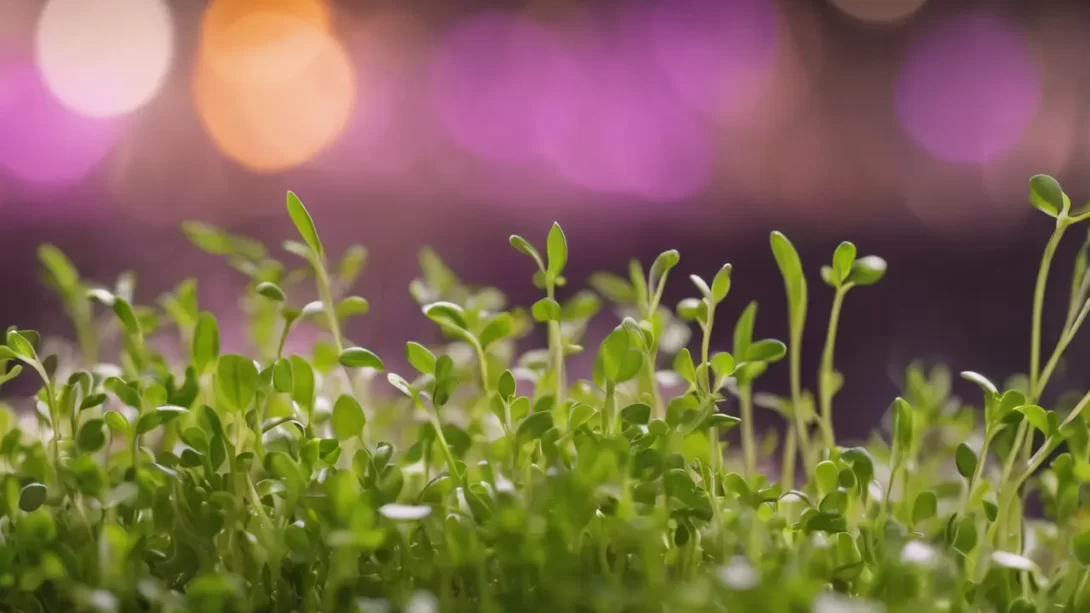Microgreens have rapidly become a darling of both the culinary world and home gardening enthusiasts. These tiny, young greens, harvested just after the first leaves have developed, pack a punch in both flavor and nutrition. As more people discover the joy and simplicity of growing microgreens, they also seek creative ways to integrate them into their diets. This article aims to provide a wealth of practical ideas and tips for using microgreens, tapping into their potential to elevate both your dishes and your gardening prowess.
Growing Microgreens at Home
One of the most appealing aspects of microgreens is their ease and speed of growth, making them ideal even for those with limited space or gardening experience. To start, you’ll need just a few basic supplies: quality seeds, a suitable growing medium (such as soil or a hydroponic mat), and a reliable light source, which can be natural or artificial.
The key to successful microgreen cultivation lies in consistent care. Watering should be done gently to avoid disturbing the delicate seeds and young plants. A spray bottle often works best for this. Additionally, maintaining a consistent temperature, ideally between 18-24°C (65-75°F), will promote healthy growth. Remember, microgreens don’t require deep soil – a shallow tray is usually sufficient.
Light is crucial for the development of microgreens. If you’re using natural light, place your trays near a sunny window. For artificial lighting, LED or fluorescent grow lights are effective. Ensure the light source is close enough to the plants to prevent them from becoming leggy, but not so close that it causes heat stress.
Harvesting Microgreens
Knowing when and how to harvest your microgreens will maximize their flavor and nutritional value. Typically, they are ready to harvest in 1-3 weeks after planting, when they’ve developed their first true leaves. At this stage, they are at their peak in terms of taste and nutrient content.
When it’s time to harvest, all you need is a pair of clean, sharp scissors or a knife. Gently hold a clump of microgreens and snip them just above the soil line. It’s important to handle them delicately to avoid bruising.
Post-harvest, microgreens can be rinsed and patted dry. To store them, wrap the greens in a paper towel and place them in a resealable bag or container in the refrigerator. This will help maintain their freshness for about a week. Remember, the fresher they are, the better they taste and the more nutrients they provide.
Hygiene is paramount in the harvesting process. Ensure your hands and tools are clean to avoid contaminating the greens. This maintains their quality and extends their shelf life.
Culinary Uses of Microgreens
Microgreens offer a versatile palette of flavors ranging from sweet and mild to spicy and tangy, making them a delightful addition to a wide array of dishes. Their delicate texture and vibrant colors can enhance both the visual appeal and taste profile of your meals. Here are some ideas to get you started:
- Salads: Mix microgreens with other salad greens or use them as the base for a fresh, nutrient-packed salad. They pair wonderfully with a simple dressing and a variety of toppings like nuts, fruits, and cheeses.
- Sandwiches and Wraps: Layer microgreens into sandwiches and wraps for an added crunch and nutrient boost. They work well with both cold cuts and vegetarian options.
- Garnishes: Elevate the presentation and flavor of soups, stews, or pasta dishes by sprinkling microgreens on top just before serving.
- Smoothies and Juices: For a quick nutrient infusion, blend microgreens into your morning smoothie or juice. They integrate well with fruits and other vegetables, adding a fresh taste and a host of vitamins.
Experimenting with different types of microgreens can lead to delightful culinary discoveries. For instance, radish microgreens add a peppery kick, while pea shoots offer a sweet and tender crunch.
Nutritional Benefits of Microgreens
Microgreens are not just about enhancing the aesthetic and flavor of your dishes; they are also nutritional powerhouses. These tiny greens are loaded with vitamins, minerals, and antioxidants, often in higher concentrations than found in their mature plant counterparts.
- Vitamins: Many microgreens are rich in vitamins C, E, and K, essential for a healthy immune system, skin, and blood clotting.
- Minerals: Depending on the variety, microgreens can provide significant amounts of iron, potassium, magnesium, and zinc, supporting various bodily functions including nerve health and immune response.
- Antioxidants: Microgreens are high in antioxidants, which help combat oxidative stress and may reduce the risk of chronic diseases.
Incorporating a variety of microgreens into your diet can contribute significantly to your overall nutrient intake. This is especially beneficial for those looking to increase their consumption of fresh vegetables in a convenient and flavorful way.
Creative Uses Beyond the Kitchen
While microgreens are primarily celebrated for their culinary applications, their potential extends into other creative and educational areas. These versatile greens can add a unique touch to various aspects of your daily life:
- Decorative Plating: Use microgreens to add a flourish to your meal presentation. A sprinkle of these vibrant greens can transform a simple dish into a gourmet experience.
- Educational Projects: Growing microgreens is an excellent way to introduce children to gardening. Their quick growth cycle offers a rewarding experience for young gardeners, teaching them about plant biology and the importance of healthy eating.
- Sustainable Living and Urban Gardening: For those living in urban areas with limited space, microgreens are a perfect introduction to urban gardening. They require minimal space and resources, making them an eco-friendly and sustainable option for fresh produce.
The beauty of microgreens lies in their simplicity and the array of possibilities they present. Whether it’s adding a dash of green to your city apartment or teaching the basics of plant growth to children, microgreens serve as a versatile and sustainable choice.
Conclusion
Microgreens, with their rich flavors, dense nutritional content, and ease of cultivation, offer a unique and rewarding gardening experience. From enhancing the taste and nutritional value of your meals to serving as an educational tool, these tiny greens have big potential. By experimenting with different varieties and incorporating them into various aspects of your life, you can enjoy the myriad benefits they bring. Embrace the world of microgreens and let these small wonders make a big impact on your gardening journey and culinary adventures.



